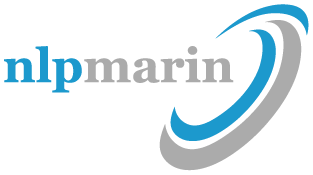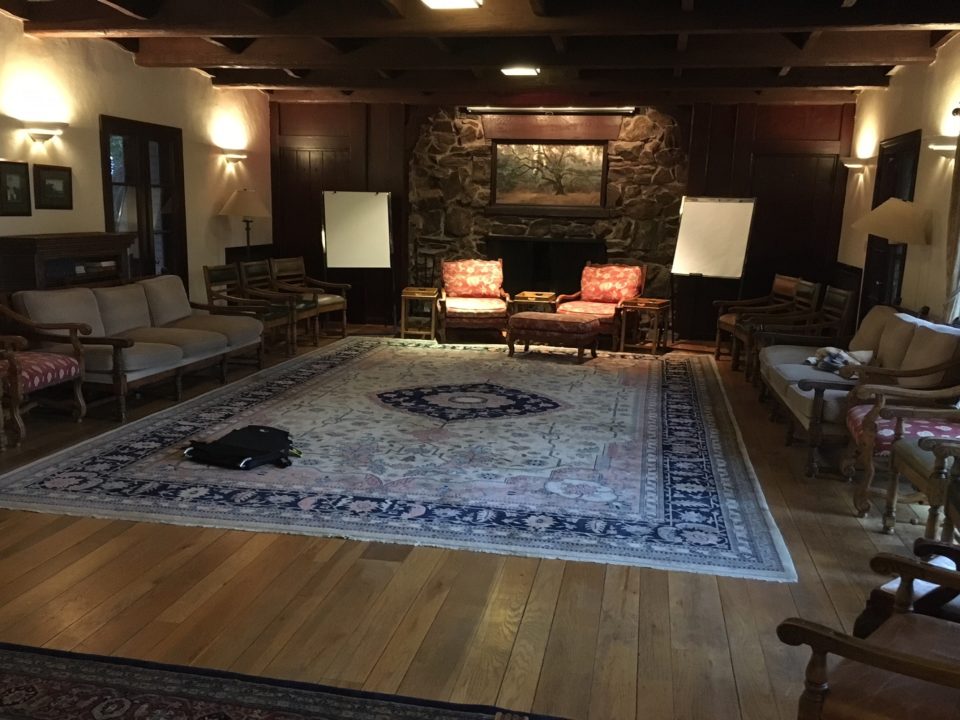The Underlying Structure of Belief

The Contest Between Self Preservation and Spiritual Evolution
April 6, 2011
Using Our Brains for a Change
June 29, 2011The Underlying Structure of Belief: No Matter How Cosmic It Gets, It’s Still All VAKOG
by Carl BuchheitWritten in 2010
“What is stopping you?” is a question used world-wide in coaching endeavors. It is most often posed in an effort to assist the client to identify the internal and external barriers they are facing as they contemplate making a change in their life. There are several problems with that question when posed in that language and for the purpose of assisting a client to change.
First of all, by adding the “p-ing” to the verb “stop”, the action of “stopping” continues into the present. So that the only answer the client can give you is the present moment, conscious processing of the information that they are aware of. The problem with most beliefs, however, is that we are not conscious of them. We just believe them to be true. So asking someone’s conscious mind to give you an answer about how their other-than-conscious process is structured is essentially asking the least informed piece of their universe for help. This is not the most useful way to illuminate unconscious process. That is simply the nature of unconscious beliefs – we are not conscious of what they are. Most of the time, this is actually useful, because having to be consciously aware of the nearly arbitrary nature of the myriad of beliefs that generate our experience would completely overwhelm our limited amount of conscious attention.
Transformational NLP is a methodology for--among other things--assisting the creature self, or our creature wiring, to more fully serve our human and spiritual goals.
In Transformational NLP, we use a working premise that thought has structure. It has a language or, if you would, a code. That code is made up of internal pictures (Visual, or V’s), tonal sounds and digital soundtracks of content (Auditory, or A’s), smells and taste sensation (Olfactory/Gustatory accesses, or O/G’s) and feelings – both physical body and emotional (Kinesthetic accesses or K’s). These internal patterns of VAKOG’s get triggered and go by at hyper speed in patterns which create meaning for humans. An external experience of wet and cold might be attached to the meaning “humiliation” if it is linked to VAKOG’s of the time our older brother and his friends threw a bucket of water on us and laughed, or it might be experienced as meaning “pleasure” if it triggers an internal VAKOG pattern of going skiing (assuming we enjoy that activity).
For example, the purely sensory experience of being “wet and cold” has no meaning by itself. It is just a set of sensations. It has no meaning until we link it with other internal representations--something remembered or imagined--that can turn “wet and cold” into “fun with snow” or “miserable waiting for a bus in the rain.”
Human beings are meaning making machines. But it is not the external or triggering experience that creates the meaning, it is the internal pattern of VAKOG that creates the meaning. It is the internal pattern of VAKOG that creates belief. In essence, the language - or code - in which our brain has written our beliefs is combinations of pictures, sounds, feelings, smells, and tastes-- VAKOG. It is the neurological links between a stored representation (often a memory) and a feeling (both emotional and body sensation) that give experience meaning. Does the feeling of wet and cold link neurologically to a stored picture of boys throwing a bucket of cold water, the stored memory sound track of being laughed at, and a feeling - muscular and chemical response - that is unpleasant, or does it link to a stored picture of skiing, a shushing sound, and a pleasant feeling?
As Transformational NLP practitioners, when a client describes an experience they are having that they do not want, the question we are asking inside ourselves is: “What are the V’s and A’s that are making those K’s-the unwanted, limiting feelings?” In other words, what internal pictures and auditory tracks is the client running--outside of any conscious awareness--that are triggering the feelings that the client is experiencing? What is the internal code that is giving their external or lived experience this unwanted, un-resourceful meaning? In Transformational NLP, we don’t want generalizations or interpretations from the conscious mind, we are after the literal content of those internal representations that are running out of conscious awareness.
These can be uncovered by tracking how and where the client’s eyes move as the person’s unconscious accesses those representations.
(It is not the purpose of this article to elucidate exactly how to track and unpack eye accessing cues. However, as a note to more experienced practitioners let’s just point out that the question “What stops you?” provides far more useful physiological answers than the question “What is stopping you?”)
The brain stores those internal representations in its impression of the external, 3-D space around our bodies. The brain literally looks at its recording of apparently invisible internal pictures, or listens to apparently silent internal sound recordings, etc., as it is processing. Some of the patterns that feel most limiting to the human adult were often created by a very young “creature self” in an effort to ensure survival. If a child experienced a traumatic event, and then decided--all at once or over time-- “I am worthless,” and then survived the situation, that child’s creature self will code for the successful survival. Consequently, the experiences that were dangerous or threatening become labeled as necessary for continuing survival, “survival” being the creature self’s highest rating for well-being. As a simple example, if the child learns to survive terribly painful shame, then the experience of shame will become a necessary component of that person’s on-going experience of safety and survival. Of course, this will be completely contradictory to what the individual consciously wants to experience in life. This disparity--between the imperative of creature-level survival and the criteria for human happiness and well-being--is what makes us feel most hopeless, as if there were something defective within us at a really, really basic level. The good and bad news is that there is nothing really wrong with us, it is just the conflicts within our patterning for well-being that create the apparent disconnects and (using the word informally) craziness.
Moreover, the creature self runs its patterning at light speed, so to speak, the more deliberate and slow-paced human aspects of our systems usually have no idea what is going on. We will tend to make sense and well-ordered meaning of things by generalizing decisions about ourselves and the world in we which we live and operate. These decisions that help us make sense of things, some of which are nearly randomly installed, are called beliefs, and these beliefs then function to add whole new layers of mysterious stabilization to our already highly stable, unwanted patterns of behavior and experience.
NLP is a methodology for assisting creature self, or creature wiring to more fully serve our human and spiritual goals. Patterns (“strategies” in NLP-speak) of VAKOG that create beliefs such as “I am worthless” cause immense pain and limitation for adult human, but to truly re-solve those patterns we must hold them as life-giving interventions that contain hidden intended positive outcomes. The art of it is to hold them not as patterns to be defeated, crushed, or forcibly removed, but to understand that we do not have to risk our self-preservation in order to learn or grow.
When representations are unpacked, they most often reveal literal content about important or traumatic events from the person’s factual past. Sometimes, what we learn is revealed more metaphorically, as compilations or even representations from someone else’s past (e.g. their mother, father, or other ancestor with whom they are identified and whose experience they somehow downloaded). These representations can get quite cosmic, but they are still created in real time, right now, in the VAKOG code of human experience.




